TOYOTA tC 2011 Owners Manual (in English)
Manufacturer: TOYOTA, Model Year: 2011, Model line: tC, Model: TOYOTA tC 2011Pages: 473, PDF Size: 10.91 MB
Page 171 of 473
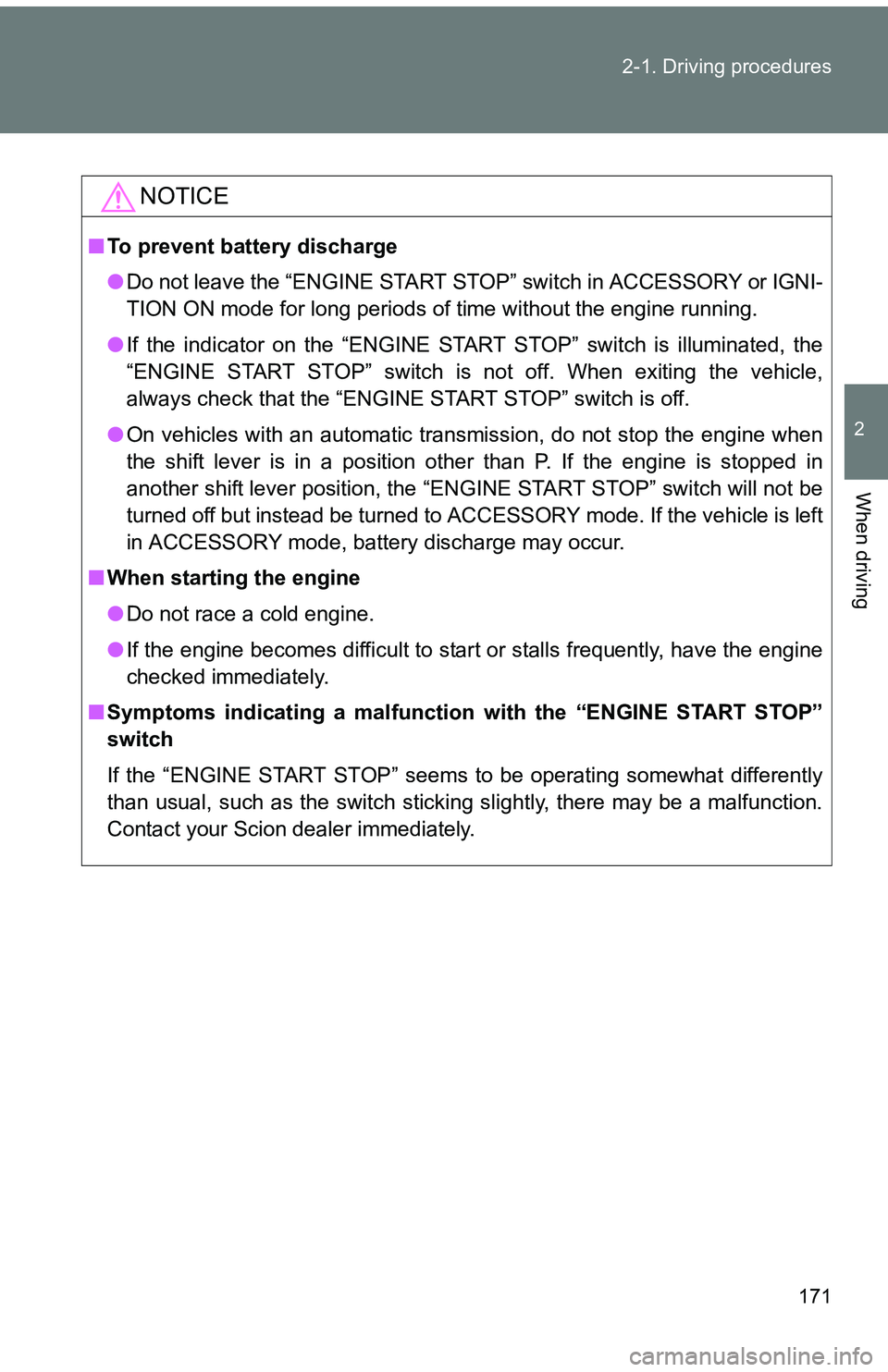
171
2-1. Driving procedures
2
When driving
NOTICE
■
To prevent battery discharge
●Do not leave the “ENGINE START STOP” switch in ACCESSORY or IGNI-
TION ON mode for long periods of time without the engine running.
● If the indicator on the “ENGINE START STOP” switch is illuminated, the
“ENGINE START STOP” switch is not off. When exiting the vehicle,
always check that the “ENGINE START STOP” switch is off.
● On vehicles with an automatic transmission, do not stop the engine when
the shift lever is in a position other than P. If the engine is stopped in
another shift lever position, the “ENGINE START STOP” switch will not be
turned off but instead be turned to ACCESSORY mode. If the vehicle is left
in ACCESSORY mode, battery discharge may occur.
■ When starting the engine
●Do not race a cold engine.
● If the engine becomes difficult to start or stalls frequently, have the engine
checked immediately.
■ Symptoms indicating a malfunct ion with the “ENGINE START STOP”
switch
If the “ENGINE START STOP” seems to be operating somewhat differently
than usual, such as the switch sticking slightly, there may be a malfunction.
Contact your Scion dealer immediately.
Page 172 of 473
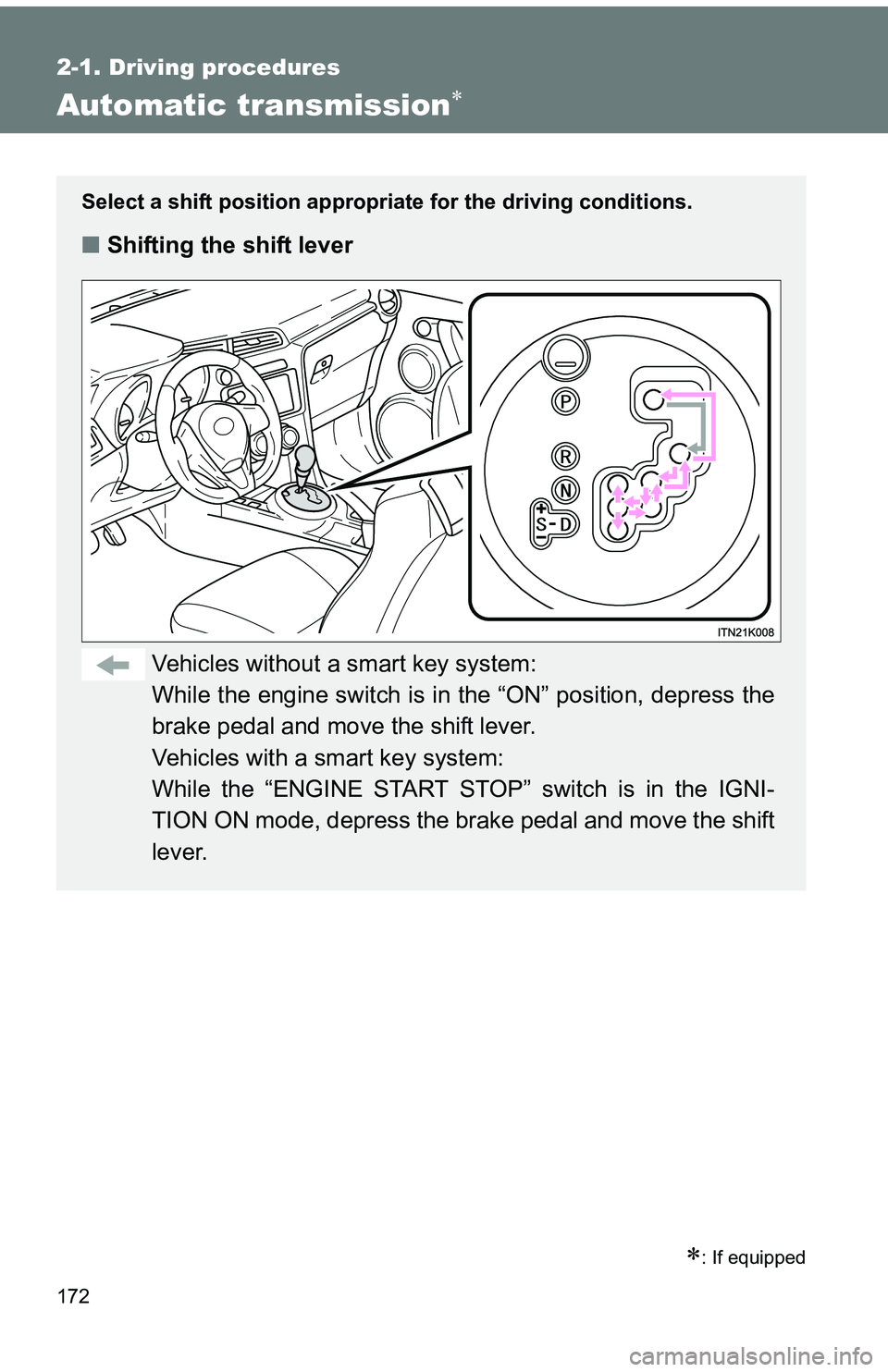
172
2-1. Driving procedures
Automatic transmission
: If equipped
Select a shift position appropriate for the driving conditions.
■Shifting the shift lever
Vehicles without a smart key system:
While the engine switch is in the “ON” position, depress the
brake pedal and move the shift lever.
Vehicles with a smart key system:
While the “ENGINE START STOP ” switch is in the IGNI-
TION ON mode, depress the brake pedal and move the shift
lever.
Page 173 of 473
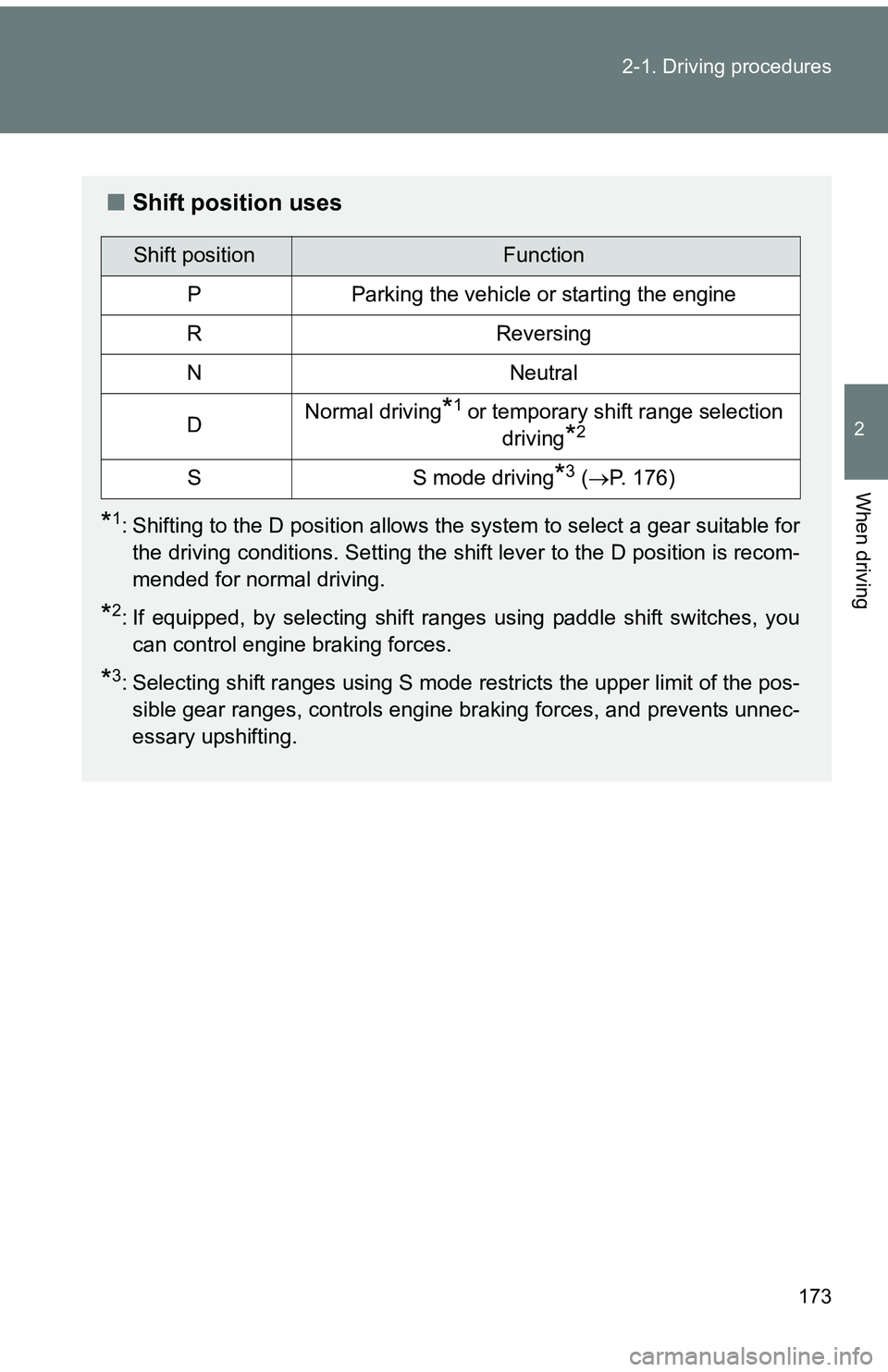
173
2-1. Driving procedures
2
When driving
■
Shift position uses
*1: Shifting to the D position allows the system to select a gear suitable for
the driving conditions. Setting the shift lever to the D position is recom-
mended for normal driving.
*2: If equipped, by selecting shift ranges using paddle shift switches, youcan control engine braking forces.
*3: Selecting shift ranges using S mode restricts the upper limit of the pos-sible gear ranges, controls engine braking forces, and prevents unnec-
essary upshifting.
Shift positionFunction
PParking the vehicle or starting the engine
RReversing
NNeutral
DNormal driving*1 or temporary shift range selection driving
*2
SS mode driving*3 (P. 176)
Page 174 of 473
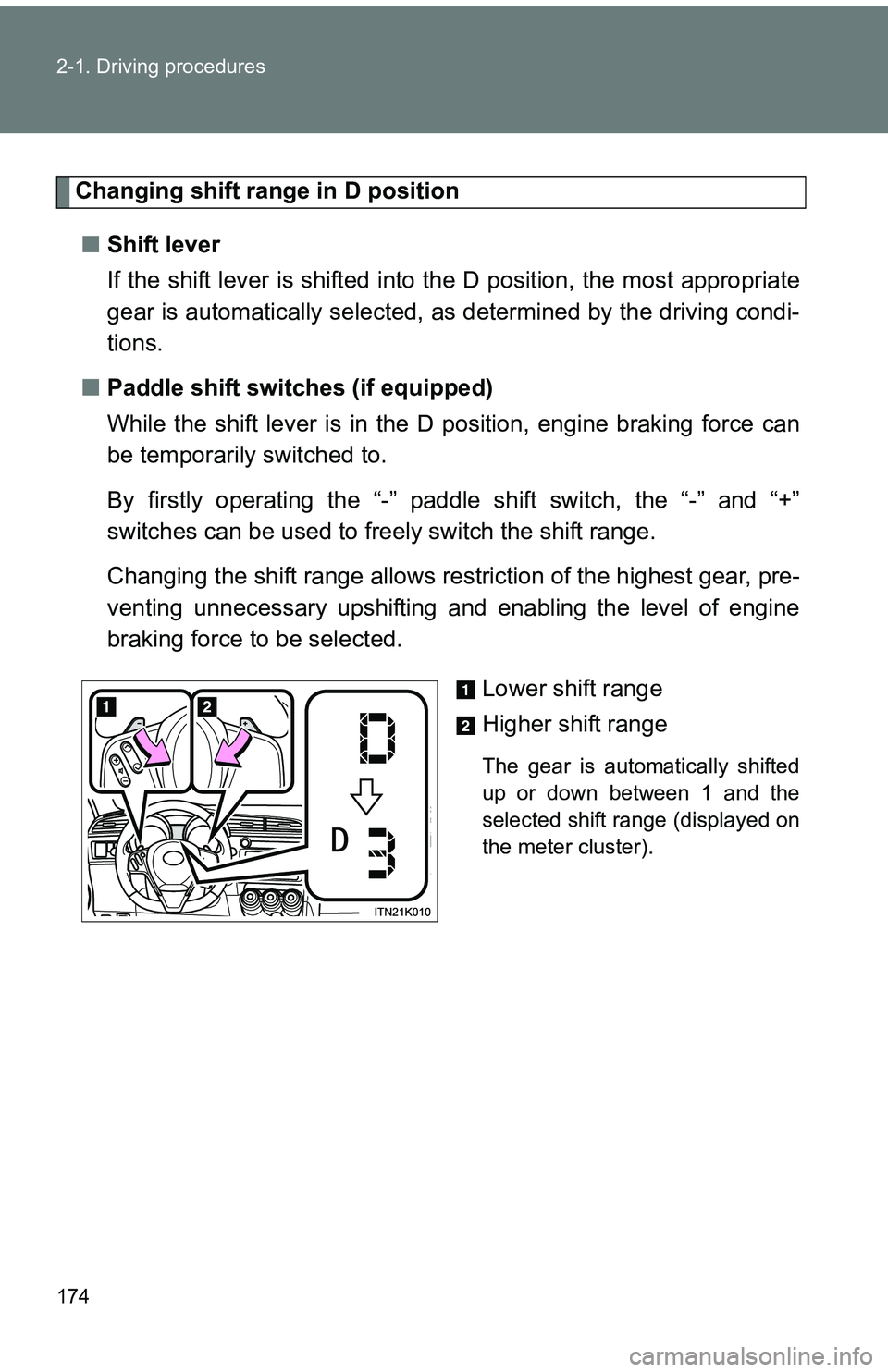
174 2-1. Driving procedures
Changing shift range in D position■ Shift lever
If the shift lever is shifted into the D position, the most appropriate
gear is automatically selected, as determined by the driving condi-
tions.
■ Paddle shift switches (if equipped)
While the shift lever is in the D position, engine braking force can
be temporarily switched to.
By firstly operating the “-” paddle shift switch, the “-” and “+”
switches can be used to freely switch the shift range.
Changing the shift range allows rest riction of the highest gear, pre-
venting unnecessary upshifting and enabling the level of engine
braking force to be selected.
Lower shift range
Higher shift range
The gear is automatically shifted
up or down between 1 and the
selected shift range (displayed on
the meter cluster).
Page 175 of 473
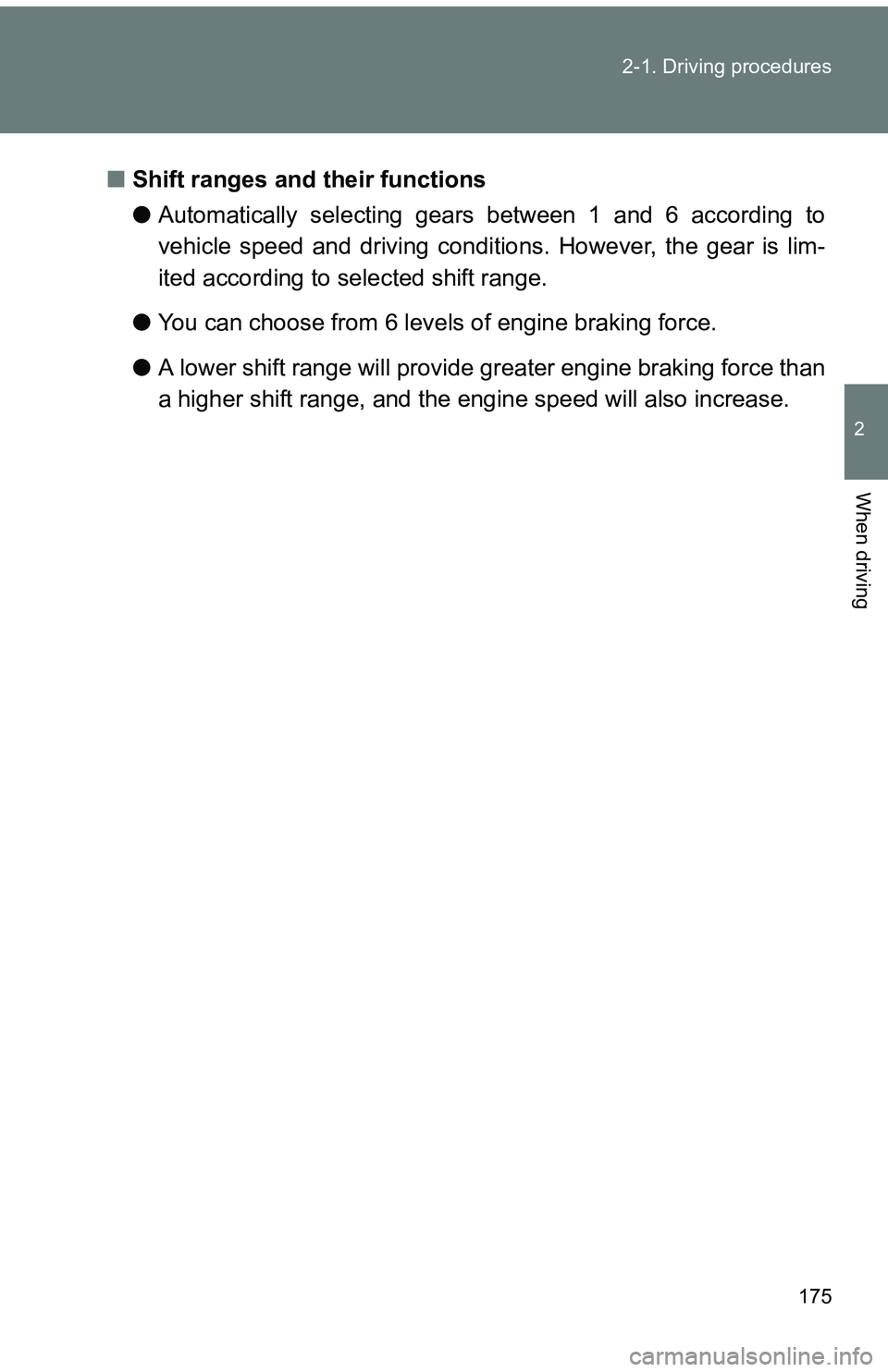
175
2-1. Driving procedures
2
When driving
■
Shift ranges and their functions
●Automatically selecting gears between 1 and 6 according to
vehicle speed and driving conditions. However, the gear is lim-
ited according to selected shift range.
● You can choose from 6 levels of engine braking force.
● A lower shift range will provide greater engine br aking force than
a higher shift range, and the engine speed will also increase.
Page 176 of 473
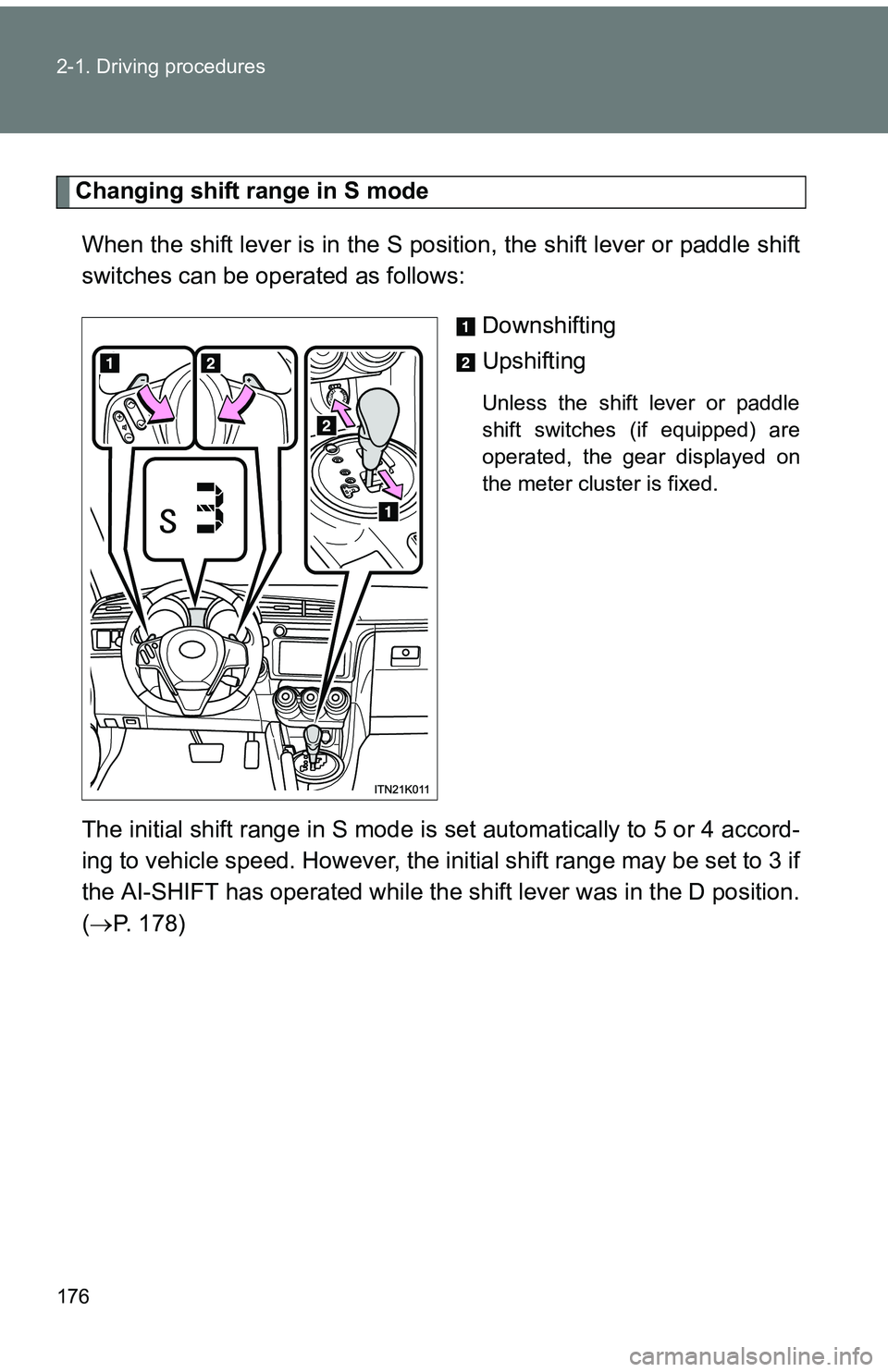
176 2-1. Driving procedures
Changing shift range in S modeWhen the shift lever is in the S posit ion, the shift lever or paddle shift
switches can be operated as follows:
Downshifting
Upshifting
Unless the shift lever or paddle
shift switches (if equipped) are
operated, the gear displayed on
the meter cluster is fixed.
The initial shift range in S mode is set automatically to 5 or 4 accord-
ing to vehicle speed. However, the initial shift range may be set to 3 if
the AI-SHIFT has operated while the shift lever was in the D position.
( P. 178)
Page 177 of 473

177
2-1. Driving procedures
2
When driving
■
Shift ranges and their functions
●Automatically selecting gears between 1 and 6 according to
vehicle speed and driving conditions. However, the gear is lim-
ited according to selected shift range.
● You can choose from 6 levels of engine braking force.
● A lower shift range will provide greater engine br aking force than
a higher shift range, and the engine speed will also increase.
■Paddle shift switch (if equipped)
●When the “-” paddle shift switch is operated in the D position, a shift
range will be automatically selected. The highest gear of the first shift
range will be one gear lower than the gear in use during normal D posi-
tion driving.
● Automatic deactivation of shift range selection in the D position
Shift range selection in the D position will be deactivated in the following
situations:
• The “+” paddle shift switch is held down for a period of time
• When the vehicle comes to a stop
• If the accelerator pedal is depressed for longer than a certain period of
time in one shift range
■ S mode
●When the shift range is 5 or lower, holding the shift lever toward “+” sets
the shift range to 6.
● To prevent excessive engine speed, a function was adopted that auto-
matically selects a higher shift range before the engine speed becomes
too high.
● To protect the automatic transmission, a function is adopted that auto-
matically selects a higher shift range when the fluid temperature is high.
Page 178 of 473

178 2-1. Driving procedures
■When driving with the cruise control system
The engine brake will not operate in the S mode, even when downshifting to
5 or 4. ( P. 200)
■ AI-SHIFT
AI-SHIFT automatically selects the suitable gear according to driver perfor-
mance and driving conditions.
AI-SHIFT automatically operates when the shift lever is in the D position.
(Shifting the shift lever to the S position cancels the function.)
■ If the “S” indicator does not come on even after shifting the shift lever
to S mode driving position
This may indicate a malfunction in the automatic transmission system. Have
the vehicle inspected by your Scion dealer immediately.
(In this situation, the transmission will operate in the same manner as when
the shift lever is in D.)
■ Downshifting restrictions warning buzzer
To help ensure safety and driving performance, downshifting operation may
sometimes be restricted. In some circumstances, downshifting may not be
possible even when the shift lever or a paddle shift switch (if equipped) is
operated. (The warning buzzer will sound twice.)
■ If the shift lever cannot be shifted from P
P. 392
CAUTION
■When driving on slippery road surfaces
Do not accelerate or shift gears suddenly.
Sudden changes in engine braking may cause the vehicle to spin or skid,
resulting in an accident.
Page 179 of 473
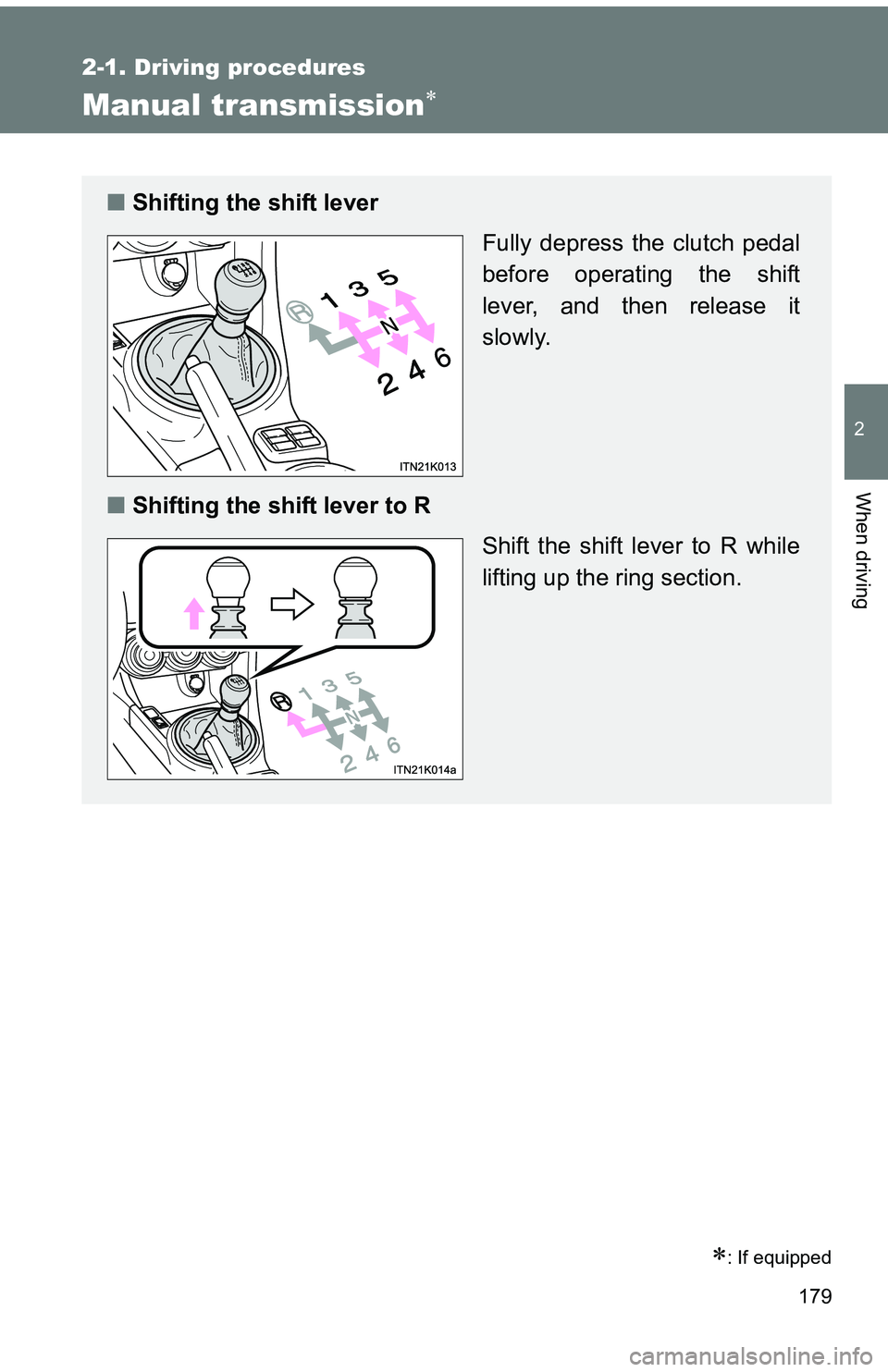
179
2-1. Driving procedures
2
When driving
Manual transmission
: If equipped
■Shifting the shift lever
Fully depress the clutch pedal
before operating the shift
lever, and then release it
slowly.
■ Shifting the shift lever to R
Shift the shift lever to R while
lifting up the ring section.
Page 180 of 473
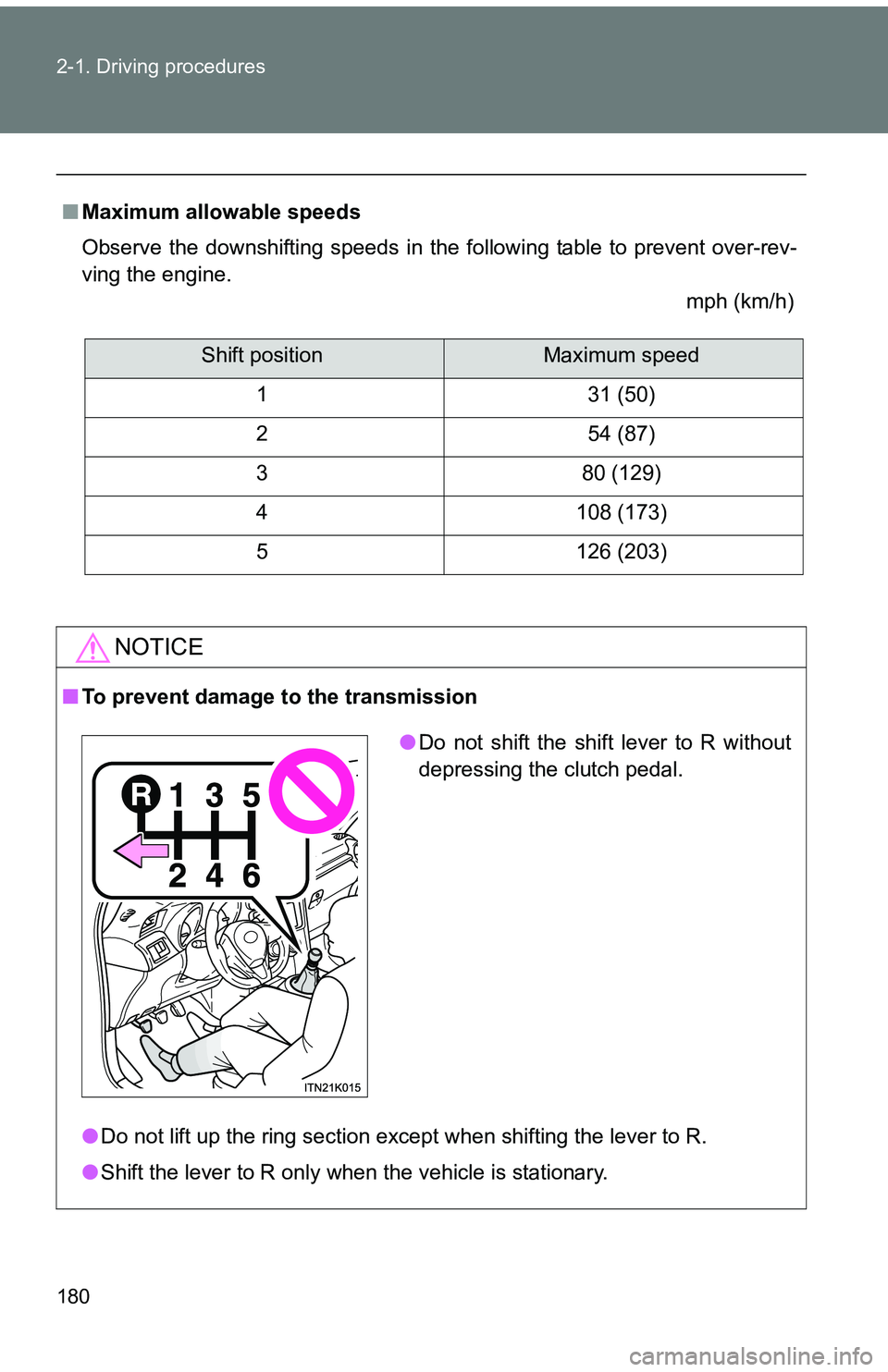
180 2-1. Driving procedures
■Maximum allowable speeds
Observe the downshifting speeds in the following table to prevent over-rev-
ving the engine.
mph (km/h)
NOTICE
■To prevent damage to the transmission
●Do not lift up the ring section except when shifting the lever to R.
● Shift the lever to R only when the vehicle is stationary.
Shift positionMaximum speed
1 31 (50)
2 54 (87)
3 80 (129)
4 108 (173)
5 126 (203)
● Do not shift the shift lever to R without
depressing the clutch pedal.